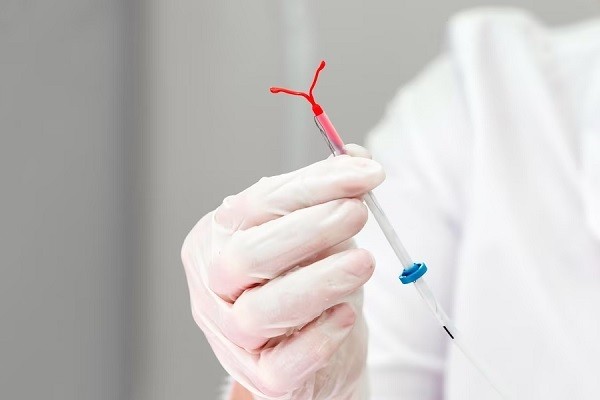Paragard Copper IUD: Is it Safe to Use?

Women have relied on diverse birth control methods over the decades to address pregnancy prevention and other healthcare needs. Among the most efficacious options are intrauterine devices (IUDs), recognized for their effectiveness in preventing pregnancy.
Regrettably, the IUD, designed to entail minimal side effects, has become a source of traumatic injuries for numerous women, prompting a lawsuit. Recently, attention has shifted to the potential risks and damages associated with the Paragard Copper IUD, capturing the concern of both women and attorneys specializing in defective medical devices.
Let’s delve deeper into this widely used birth control method that has, unfortunately, evolved into a distressing experience for many women throughout the USA.
What is Paragard Copper IUD?
Paragard, a copper-based intrauterine medical device (IUD), serves as a non-invasive contraceptive for women. Unlike other IUDs on the market that use drugs or hormones to prevent pregnancy, Paragard stands out as the sole non-hormonal option with a copper coil. Once placed in the uterus, the copper component triggers chemical reactions in the body, creating an environment that hinders pregnancy.
Manufactured by Teva Pharmaceuticals, it boasts a 99% effectiveness rate in preventing pregnancy without the need for surgical procedures during insertion or removal. Despite its popularity, Paragard IUD has become associated with adverse side effects and complications, particularly during the removal process.
Complications Faced by Women Using Paragard IUD
Similar to other IUDs, Paragard IUD insertion can lead to common side effects such as low blood pressure, dizziness, nausea, back pain, spotting, or a lower-than-normal heart rate. Many reports also suggest that the device may not be suitable for everyone, and some women may develop allergic reactions to the copper-based IUD.
While these are recognized issues, women using Paragard T 380A IUDs have reported more severe problems, including uterine wall perforation, organ damage due to device movement, breakage during removal, inflammation, scarring inside the uterus, and device expulsion.
As per TorHoerman Law, these complications pose significant health risks, with broken IUD pieces potentially causing lacerations to internal organs, migration to other body parts, and necessitating additional surgeries.
Over the past decade, the FDA has received reports of over 38,000 cases involving serious Paragard complications, such as ectopic pregnancies and organ damage. Treating injuries resulting from IUD failure often requires extensive and painful surgeries, with extreme cases necessitating follow-up procedures like hysterectomy or laparotomy.
Paragard users may not have anticipated these complications, as the manufacturer allegedly failed to adequately warn consumers of these defects. Consequently, many women experiencing injuries due to these complications have opted to join the Paragard lawsuit.
Paragard IUD Lawsuit – A Timeline of Events
The FDA first approved Paragard by Teva Pharmaceuticals in 1984, featuring two models of the IUD – the Copper 380 Slimline and the Copper 380A.
In 2016, the first Paragard lawsuit emerged when a woman reported that the device broke during removal, leaving fragments inside her uterus, requiring surgical intervention. Allegations in the lawsuit focused on Teva Pharmaceuticals’s failure to adequately warn about potential device fractures during removal.
Subsequently, more women filed lawsuits over similar incidents of device breakage inside the body, all asserting manufacturer negligence leading to victim injuries. Since its introduction in 1989, over 40,000 adverse events associated with Paragard use have been reported, with more than 16,000 deemed serious and 15 resulting in death.
Facing numerous lawsuits, Teva Pharmaceuticals decided to sell the production unit of Paragard IUD to Cooper Pharmaceuticals in 2017. This incident coincided with an uptick in side effects reported by women across the USA.
However, issues with the device predate this change, as incidents of breakage and adverse effects were reported even when Teva Pharmaceuticals was handling the production of the device.
Finally, in December 2020, all Paragard IUD lawsuits were consolidated into a multi-district litigation, focusing on the failure of both manufacturers to provide adequate warnings about potential injuries.
The lawsuits also allege that Teva Pharmaceuticals’s advertising was misleading, portraying the device as safe and effective, contrary to the claims in the Paragard lawsuit, where it was deemed defective.
In Conclusion
As of October 2023, there are 2,246 Paragard lawsuits awaiting resolution and a total of 2,323 cases against the company. The class-action lawsuit has been advancing quickly, with most women seeking compensation for their injuries, including medical expenses, pain, and suffering.
Despite numerous women sharing distressing stories about the emotional, physical, and financial consequences of a Paragard IUD failure, the product continues to be available for use. This case underscores the crucial need for transparency from medical device manufacturers when it comes to advertising and promoting products.




